Authentic Bouillabaisse Recipe: A Classic French Seafood Stew
Embark on a culinary journey to the sun-drenched coast of Provence with our authentic Bouillabaisse recipe. This iconic French fish stew is more than just a meal; it’s a symphony of Mediterranean flavors, combining fresh seafood with fragrant herbs, exotic saffron, and a hint of orange. Known for its deep golden hue and intoxicating aroma, Bouillabaisse is a celebration of the sea, perfect for any special occasion or a comforting family dinner. Forget complicated techniques; we’ll guide you through creating a rich, flavorful broth that forms the heart of this exquisite dish. Prepare to tantalize your taste buds and impress your guests with this truly divine seafood experience!
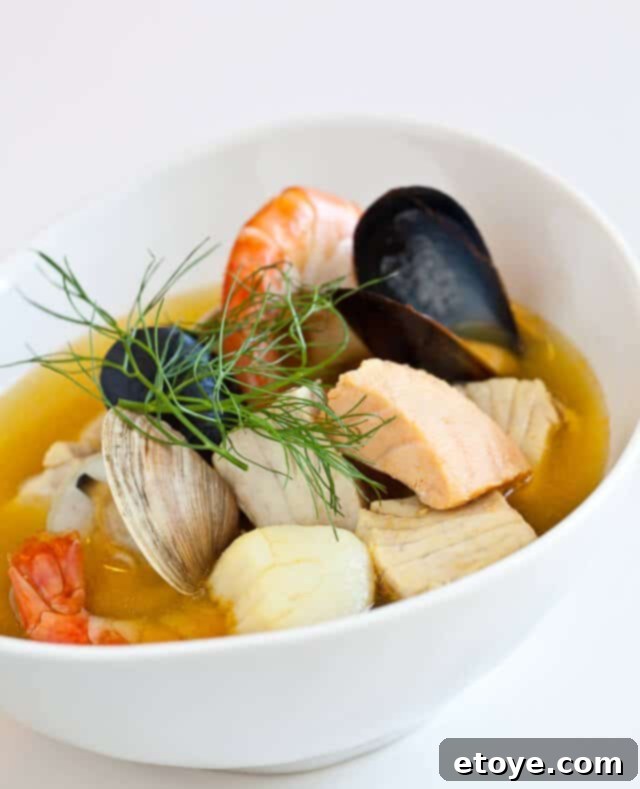
Why This Bouillabaisse Recipe is a Must-Try
Our Bouillabaisse recipe stands out for several compelling reasons:
- A True French Classic: Experience the rich culinary heritage of France with this traditional Marseillaise fish stew. It’s an authentic taste of Provence that has been cherished for centuries, making it a cornerstone of French coastal cuisine.
- Incredibly Rich and Flavorful: This isn’t just a soup; it’s a hearty stew packed with layers of flavor. The long simmering of fish trimmings, combined with aromatic vegetables and spices, creates a deeply satisfying broth that is both robust and delicate, lingering delightfully on the palate.
- Diverse Seafood Medley: By incorporating three or more types of seafood, this recipe delivers an incredible range of textures and flavors in every spoonful. From flaky white fish to succulent shellfish, each bite offers a unique discovery, showcasing the bounty of the ocean.
- A Seafood Lover’s Dream: If you adore fresh seafood, this dish is an absolute essential. It highlights the natural sweetness and delicate qualities of various fish and shellfish, all brought together in a harmonious, aromatic broth that truly lets the seafood shine.
- Exotic Aromatic Profile: The unique blend of aromatic fennel, bright orange peel, and especially the precious saffron, elevates this dish beyond a simple fish soup. These ingredients contribute to its signature golden color and distinctive, unforgettable taste that is synonymous with authentic Bouillabaisse.
Essential Ingredients for Your Bouillabaisse
Crafting the perfect Bouillabaisse begins with selecting fresh, high-quality ingredients. Here’s what you’ll need to create this iconic French seafood stew:
- High-Quality Olive Oil: As the foundation of many Mediterranean dishes, a good extra virgin olive oil is used for sautéing the aromatic vegetables, imparting a fruity, peppery note.
- Fresh Aromatics: Leek, onion, and garlic form the savory base of the broth. When slowly cooked, they release their sweet, pungent flavors, building the first layer of complexity.
- Ripe Tomatoes: Essential for adding natural acidity and a beautiful, rustic color to the broth, ripe tomatoes provide a sweet and tangy depth that brightens the overall flavor.
- Orange Peel: A traditional and crucial ingredient, the peel (zest, not the bitter white pith) contributes a subtle citrusy brightness that beautifully complements the seafood and saffron, adding a layer of unexpected freshness.
- Fennel: Both the delicate green fronds and the bulb (though we’ll primarily use fronds for the initial broth and garnish) lend a distinct anise-like flavor, a signature note that is indispensable in authentic Bouillabaisse.
- Precious Saffron: The star spice of Bouillabaisse, saffron is responsible for the stew’s gorgeous deep golden color and its subtly floral, honey-like aroma. Using good quality saffron threads is paramount for achieving the true essence of this dish.
- Fresh Herbs: A fragrant bouquet of fresh herbs like parsley, thyme, and oregano will infuse the broth with herbaceous freshness, enhancing the savory notes of the stew.
- Fish Trimmings: Crucial for building a rich, deeply flavored stock. This includes fish heads, bones, tails, and even shrimp shells – don’t skip this for authentic depth and body in your Bouillabaisse broth!
- Assorted Fresh Fish and Shellfish: The heart of the stew! Aim for a variety, combining firm white fish with more delicate options and a mix of shellfish to create a truly varied and exciting texture and taste experience.
- Dry White Wine: Adds complexity, acidity, and brightens the broth, effectively deglazing the pan and enhancing the overall flavor profile of the stew.
- Sea Salt: Essential for seasoning, sea salt brings out all the natural flavors of the seafood and aromatics, ensuring the broth is perfectly balanced.
Each ingredient plays a vital role in building the complex and harmonious flavors that make Bouillabaisse so special. Don’t be afraid to source the freshest seafood you can find, as its quality will directly impact the final dish!

Step-by-Step Guide: Crafting Your Bouillabaisse
Creating this gourmet French fish stew is a rewarding experience that will fill your home with incredible aromas. Follow these detailed steps to bring the authentic flavors of the Mediterranean to your kitchen:
1. Sauté the Aromatics to Build Your Base
Begin by heating a generous 3 tablespoons of high-quality olive oil in a large, heavy-bottomed stockpot or Dutch oven over medium heat. Once the oil is shimmering gently, add the chopped leek (ensure you use only the white part for a milder flavor), chopped onion, and minced garlic. Sauté these aromatics patiently for about 5-7 minutes, stirring occasionally, until they soften and become translucent. It’s crucial not to let them brown, as this can add a bitter note. This slow sautéing process is fundamental, as it builds a sweet and savory base that will infuse the entire Bouillabaisse broth with depth.

Just a few minutes over medium heat is all it takes to develop a foundational layer of flavor, releasing the sweet essence of these vegetables.
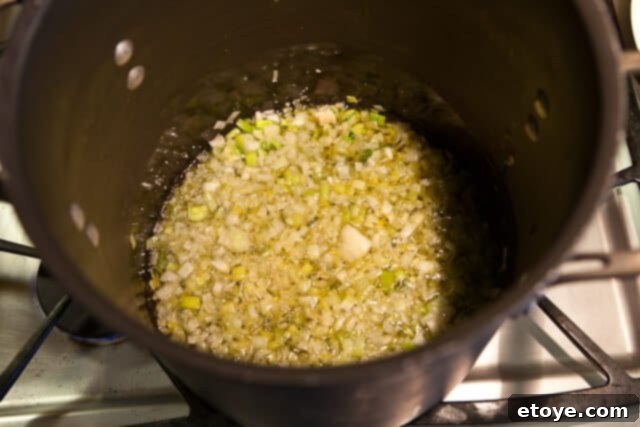
2. Infuse with Herbs, Spices, and Citrus
Next, it’s time to add the herbs, spices, and citrus that give Bouillabaisse its distinctive character. Incorporate the chopped fennel fronds, your chosen fresh herbs (such as parsley, thyme, and oregano), and the vital orange peel. For the fennel, remember to only use the delicate green fronds for the broth and as a garnish, saving the tougher white bulb for another delicious recipe like a fresh salad. The combination of these aromatics will immediately begin to fill your kitchen with an irresistible, complex fragrance.
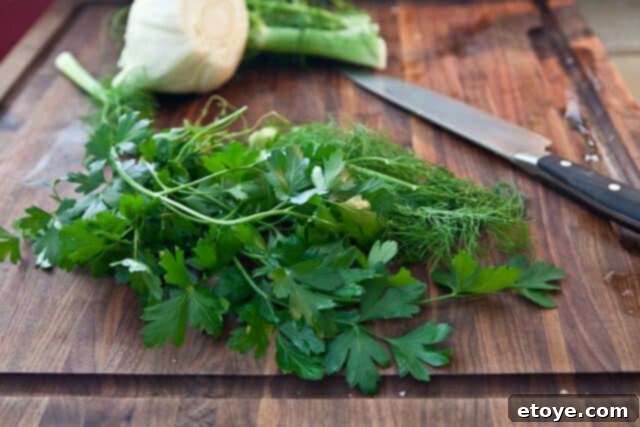
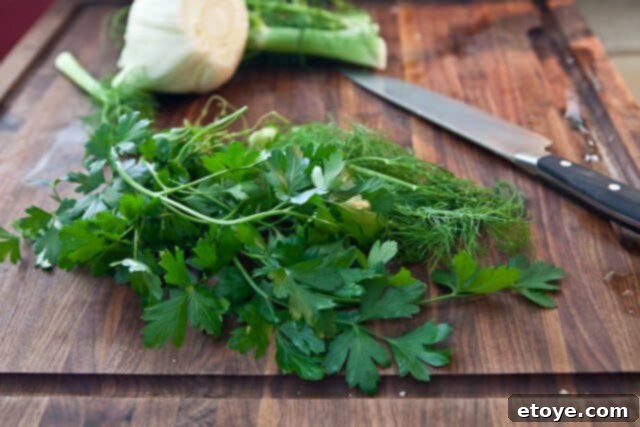
To prepare the orange peel, simply use a vegetable peeler to shave off strips of the bright orange outer layer only, being careful to avoid the bitter white pith beneath. This ensures a pure, bright, citrusy note without any harshness.
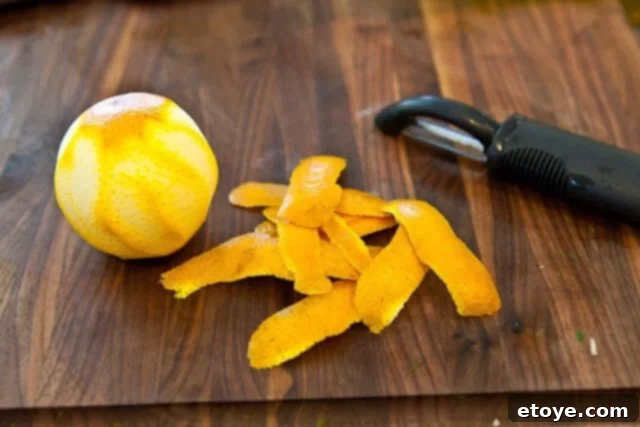
Now, gently crush the saffron threads between your fingers or with a mortar and pestle to release their full aroma and color. This crucial step helps them dissolve and impart their beautiful golden hue and unique, subtly floral flavor more effectively into the stew. Aim for a finer, almost powder-like consistency for maximum infusion.
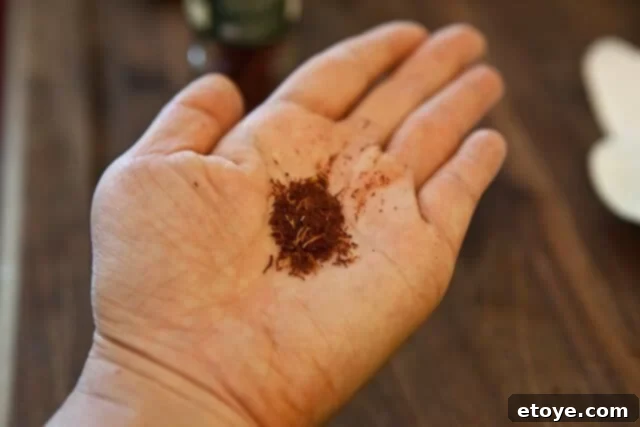
Chop three ripe tomatoes into rustic pieces. These will break down during the simmering process, adding natural sweetness, body, and an inviting red tint to the broth.
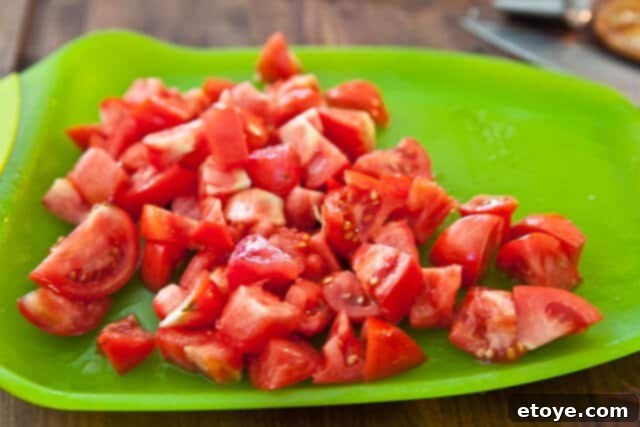
3. Build the Flavorful Fish Broth
Add all the prepped ingredients – the orange peel, chopped tomatoes, fennel fronds, fresh herbs, crushed saffron, and crucially, the fish trimmings (heads, bones, tails, and shrimp shells are all excellent for this) – into the pot with the sautéed leek, onion, and garlic. Pour in the 10 cups of water and 1 cup of dry white wine, and season generously with 1 tablespoon of sea salt. Stir everything together. Bring the mixture to a rolling boil over high heat, then immediately reduce the heat to low, cover the pot, and let it simmer gently for 30 minutes. This simmering period is absolutely essential for extracting all the deep, complex flavors from the fish bones and aromatics, creating the robust and authentic base for your Bouillabaisse.
4. Strain for a Silky Smooth Broth
After the broth has simmered and infused, carefully strain the bouillabaisse base through a fine-mesh sieve or a chinoise into another clean large pot. Use the back of a sturdy spoon or a spatula to press down firmly on the solids in the sieve to extract as much liquid and flavor as possible before discarding them. This step is key to ensuring a smooth, refined broth, free of any bones, scales, or fibrous vegetable material. For an even smoother texture, some traditionalists pass the broth through a food mill, but a good quality fine-mesh strainer works perfectly well for home cooks.

5. Perfectly Cook Your Assorted Seafood
Return the strained Bouillabaisse broth to a simmer over medium-high heat. Now is the time to taste the broth and adjust the seasoning with additional sea salt if necessary. Remember, the broth should be slightly salty at this stage, as the seafood you’re about to add is unseasoned and will absorb some of that saltiness. Next, it’s time to cook your assorted seafood. Add the seafood in stages, starting with items that require slightly longer cooking times first. For example, if you’re using whole lobster tails or large crab claws, add them first and give them a 2-minute head start. Then, add clams, followed by mussels and extra-large shrimp. Lastly, introduce the delicate fish fillets (such as snapper, cod, or halibut), scallops, and any smaller shrimp. The absolute key here is not to overcook the seafood; it should be tender, juicy, and just cooked through, typically within 4-5 minutes maximum for all additions. Once the seafood is perfectly cooked, turn off the heat immediately to prevent it from becoming tough.

6. Serve and Garnish with Elegance
Ladle the rich, aromatic Bouillabaisse, with its generous portions of succulent seafood, into warm, deep bowls. Garnish each serving with a sprinkle of fresh fennel fronds or a few sprigs of fresh parsley for an inviting visual appeal and a burst of fresh flavor. Serve immediately with plenty of crusty bread, perfect for soaking up every last drop of the exquisite broth. For an authentic touch, consider serving with a dollop of traditional rouille (a spicy garlic and saffron mayonnaise) for an extra layer of creamy, pungent kick. Enjoy this heartwarming and elegant French classic!

Choosing the Best Seafood for Your Bouillabaisse
The beauty of Bouillabaisse lies in its versatility and the celebration of fresh seafood. While traditional recipes from Marseille often call for specific local rockfish, you have plenty of options to create a fantastic stew using readily available seafood. The key is to use a variety of fish and shellfish to achieve a complex flavor and texture profile that makes each spoonful exciting.
Traditionally, an authentic Bouillabaisse includes at least three different types of lean, firm white fish, often combined with some shellfish. For this recipe, I used Amberjack and Grouper (fresh from a fishing trip!), along with salmon, shrimp, scallops, clams, and mussels. While I might have gone a little overboard with the variety, it truly makes for a magnificent stew! Here are some guidelines and suggestions for selecting your seafood:
- Firm White Fish: These are crucial both for contributing to the depth of the broth and for holding their shape beautifully in the stew. Excellent choices include snapper, cod, halibut, monkfish, sea bass, haddock, or even a robust tilapia. Aim for fresh, flaky varieties.
- Oily Fish (Optional): A small amount of salmon or tuna can add a lovely richness and depth of flavor, though some strict traditionalists might prefer to stick exclusively to leaner white fish. If using, add towards the end of cooking.
- Shellfish: Mussels and clams are fantastic for their brininess and sweet, tender meat, and they release flavorful juices into the broth. Shrimp and scallops add a wonderful sweetness and delicate textures. For a truly luxurious Bouillabaisse, consider adding lobster or crab meat.
- Fish Trimmings for Stock: Do not underestimate the importance of fish heads, bones, and even shrimp shells when making your initial stock! These “trimmings” are packed with gelatin and flavor compounds that are essential for creating a deeply flavorful and authentic broth. If you purchase fillets, always ask your fishmonger if they can provide these trimmings; most are happy to oblige.
Always opt for the freshest seafood available. Visit your local fish market and ask what’s in season or what they recommend. A good fishmonger can be an invaluable resource, guiding you to the best catches for your Bouillabaisse and even offering advice on preparing specific types of fish.
Can You Freeze Bouillabaisse? Maximizing Your Culinary Efforts
Yes, absolutely! Cooking a large batch of Bouillabaisse and freezing individual or family-sized portions for later is a fantastic and practical way to enjoy this delicious meal more than once with minimal effort. It allows you to savor the rich flavors of Provence on a busy weeknight, long after your initial cooking session, making it a great meal-prep option.
To ensure your frozen Bouillabaisse maintains its quality and delicious flavor, proper preparation and storage are key:
- Cool Completely: Before freezing, it is imperative to allow the Bouillabaisse to cool down entirely. Transfer the hot soup into a clean container and let it reach room temperature. To speed up this process, you can place the container in an ice bath, stirring occasionally. This crucial step prevents the formation of large ice crystals, which can negatively impact the texture of the seafood and broth upon thawing.
- Separate Seafood (Optional but Recommended): For the best texture upon reheating, consider removing the cooked fish and shellfish from the broth before freezing. While not strictly necessary, freezing seafood separately prevents it from becoming rubbery or overcooked when reheated. Store the broth and seafood in separate freezer-safe containers. This allows you to reheat the broth gently and add the seafood back in just until warmed through.
- Portion Appropriately: Divide the cooled Bouillabaisse (or just the broth if separated) into single-serving or family-sized freezer-safe containers or heavy-duty freezer bags. This makes reheating incredibly convenient, allowing you to defrost only what you need without wasting any precious leftovers.
- Label and Seal: Clearly label each container with the date of freezing. Bouillabaisse can be frozen for up to six months, maintaining good quality and flavor. Ensure the containers are airtight to prevent freezer burn, which can dry out the food and affect its taste.
When you’re ready to enjoy it again, simply thaw the Bouillabaisse (or its components) in the refrigerator overnight. Reheat the broth gently on the stovetop over medium-low heat. If you froze the seafood separately, add it to the simmering broth and cook just until heated through. Serve with fresh crusty bread and a garnish of herbs, and it will taste almost as fresh and vibrant as the day you made it!
Understanding Saffron: The Golden Spice of Bouillabaisse
Saffron is more than just a spice; it’s a culinary treasure known for its vibrant color, distinctive aroma, and considerable cost. Its presence is vital to an authentic Bouillabaisse, imparting that characteristic deep golden hue and a subtly floral, slightly sweet, and earthy flavor that elevates the entire dish from a simple fish stew to an extraordinary culinary experience.
The reason for saffron’s expense lies in its incredibly labor-intensive harvesting process. It comes from the delicate stigmas of the Crocus sativus flower, commonly referred to as the “saffron crocus.” Each beautiful purple flower produces only three tiny red-orange stigmas, which must be carefully hand-picked. It takes approximately 220,000 dried stigmas from about 70,000 flowers to produce just one pound of saffron, making it the most expensive spice by weight in the world. These exquisite flowers bloom for only about two weeks, typically in October, adding to its rarity and allure.
Originating in the Middle East, saffron cultivation spread across the Mediterranean and into parts of Asia, becoming a prized commodity. Today, Iran is the largest producer globally, while Spain holds a particular reputation for producing some of the highest quality saffron, often due to traditional cultivation and drying methods. Historically, saffron has been utilized not only in cooking for its distinct flavor and deep orange-red color but also found applications in ancient medicine, religious ceremonies, luxurious perfumes, cosmetics, and even as a vibrant fabric dye. One can imagine the opulent baths of ancient Greeks and Romans, tinted and fragranced by this precious spice!
In Bouillabaisse, saffron is not merely about providing color; it adds an unparalleled depth and warmth that ties all the diverse flavors of the seafood and aromatics together, creating a truly harmonious and unforgettable taste experience that defines this classic French stew.
Top Tips for a Perfect Bouillabaisse
Achieving a truly remarkable Bouillabaisse, one that transports you to the south of France with every spoonful, is easier with these expert tips:
- Embrace Finfish Variety: For a Bouillabaisse that truly honors its origins and delivers complex flavors, prioritize a mix of different finfish over an abundance of shellfish. While shellfish adds a lovely touch, a greater variety of firm white fish (like cod, snapper, halibut, and even rockfish) creates a more complex, nuanced, and traditional broth.
- Efficient Straining for Smoothness: While a traditional food mill can yield an incredibly smooth broth, a high-speed blender followed by a fine-mesh strainer is a fantastic and more accessible modern alternative. Blending the cooked solids with a bit of the broth before straining helps to extract maximum flavor and ensures a silky, refined texture for your soup base.
- Activate Your Saffron: Always gently crush saffron threads with your fingers or a mortar and pestle just before adding them to the hot liquid. This helps to break down the cells and release their essential oils, intensifying both the vibrant golden color and the unique floral aroma into a more potent form. For an even deeper infusion, consider steeping the crushed saffron in a small amount of warm broth for 10-15 minutes before incorporating it into the main pot.
- Fennel Fronds are Key: When preparing fennel, for the purest anise flavor in your broth, use only the delicate green fronds for the initial broth infusion and as a fresh garnish. The tougher, denser white bulb of the fennel has a much stronger anise flavor and is often better suited for other preparations, such as thinly sliced in a salad or roasted as a side dish.
- Don’t Skimp on Fish Trimmings: The backbone of a truly great, deeply flavorful Bouillabaisse is a robust, homemade fish stock. Make sure to collect fish heads, bones, and even shrimp shells (if using shrimp) from your chosen seafood. These “trimmings” are packed with gelatin and rich flavor compounds that are absolutely essential for creating an authentic and full-bodied broth. Ask your fishmonger if they can provide these; many are happy to give them away.
- Serve with Crusty Bread and Rouille: Bouillabaisse is traditionally served with thick slices of toasted crusty bread, often rubbed generously with fresh garlic, and accompanied by a dollop of rouille. Rouille, a spicy garlic and saffron mayonnaise, adds a creamy texture and a pungent, slightly spicy kick that perfectly complements the rich seafood stew. Don’t miss out on this classic and essential pairing!
- Taste and Adjust Seasoning: Always taste your broth before adding the final seafood. It should be flavorful and slightly on the salty side, as the unseasoned seafood will absorb some of the saltiness as it cooks, ensuring a perfectly seasoned final dish.
Explore More Delicious Seafood Dishes
If you love the exquisite flavors of the sea and are looking for more culinary adventures, be sure to check out these other fantastic seafood recipes:
- Thai Seafood Curry Recipe
- Seafood Miso Noodle Soup
- Thai Fish Soup
- Crawfish Boil
We truly hope you enjoy preparing this classic Bouillabaisse recipe as much as we do! Your feedback is invaluable to us and helps other home cooks. Please feel free to leave a star rating and share your thoughts and experiences in the comments section below. Happy cooking!
Bouillabaisse Recipe
This classic Bouillabaisse recipe is packed with flavor! The combination of herb, spice, orange peel, and fennel is divine. The saffron gives the soup its deep golden color. You have to give it a try, it’s delicious!
Author: Jaden Hair
Prep Time: 15 mins
Cook Time: 40 mins
Total Time: 55 mins
Course: Main Course
Cuisine: French
Servings: 6 servings
Keywords: bouillabaisse, fish soup, fish stew, seafood stew, French seafood, saffron fish stew
Ingredients
- 3 tablespoons olive oil
- 1 leek, white part only, chopped
- 1 onion, chopped
- 2 cloves garlic, minced
- Peel of 1 orange (orange part only, use vegetable peeler)
- 3 tomatoes, chopped
- 1/3 cup chopped fennel fronds
- Fresh herbs (in any combination: thyme, parsley, oregano)
- 1/2 teaspoon saffron threads, crushed
- 3-4 pounds of fish trimmings (heads, bones, tail, shrimp shells)
- 10 cups water
- 1 cup dry white wine
- 1 tablespoon sea salt
- 3 pounds of assorted fish and shellfish (clams and mussels should be scrubbed clean)
Instructions
- In a large stockpot, heat the olive oil on medium heat. When hot, add in the leek, onion, and garlic. Sauté for 5 minutes until softened but not brown.
- Add in the orange peel, tomatoes, fennel, fresh herbs, saffron, fish trimmings, water, wine, and salt. Turn the heat to high and bring to a boil. Then turn the heat to low and simmer for 30 minutes. Strain the soup into another large pot, pressing on the solids to extract all liquid. Discard solids.
- Bring the strained soup to a boil over medium-high heat. Taste and adjust with additional salt if needed. The soup should be slightly salty (as the unseasoned seafood will absorb salt). Now, cook the seafood, adding items that require the most cooking time first. If you have whole lobster tails or large crab claws, add them in first for a 2-minute head start. Add clams next, then mussels and extra-large shrimp. Lastly, add the fish, scallops, and any smaller shrimp. Cook for 4-5 minutes maximum, being careful not to overcook. Turn off the heat.
- Ladle bouillabaisse into each bowl with the seafood and garnish with fresh fennel fronds or parsley. Serve immediately, ideally with crusty bread and rouille.
Notes
- Using a variety of fish (mostly finfish) and fewer shellfish is truer to the original spirit of bouillabaisse.
- Using a blender instead of the more traditional food mill helps to break down the solids enough so they can pass through a strainer (though you can use a food mill if you have a good one).
- You can gently crush the saffron in your fingers to create a powder that will absorb into the Bouillabaisse recipe, enhancing color and flavor release.
- I only use the green fronds of the fennel (save the white bulb to use in another recipe, like a salad, due to its stronger flavor).
- Serve with plenty of crusty bread for dipping and a side of rouille for an authentic experience!
Nutrition Information (per serving)
- Calories: 368 kcal
- Carbohydrates: 8 g
- Protein: 51 g
- Fat: 11 g
- Saturated Fat: 2 g
- Cholesterol: 151 mg
- Sodium: 1340 mg
- Potassium: 997 mg
- Fiber: 2 g
- Sugar: 3 g
- Vitamin A: 782 IU
- Vitamin C: 15 mg
- Calcium: 79 mg
- Iron: 2 mg
